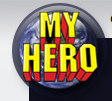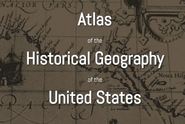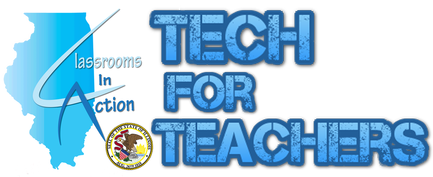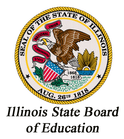Inquiry Resources

Newspaper Map is a platform that opens to a homepage with a map of location icons of multiple colors. The key on the right hand side of the screen shows the language that matches with the color. Each icon matches to a local newspaper that is in the language of the colored icon. If the language is not English(yellow) then you can select to have the newspaper translated. Selecting the newspaper picture will take users to the online version of the newspaper where users can read the local news. A great way to see current events around the world and see the perspectives of major events from the international viewpoint. (Using a Chrome Extension called ADBlock will keep some of the ads that appear in Europe, and not so appropriate, from displaying.)

Factitious is a game that tests your knowledge of Fact or Fiction news. Can you tell real news from fake news? Simple platform that checks users knowledge of the news. The factual news articles can connected to the answers.

All Sides is a platform that teaches students how to consider and discuss topics with respect and reason so that they can make better decisions. The resources all educators to foster communication, civil conversations, seek diverse views and participate in democracy. Educators can find tools, lesson plans and assessments. Students can find news resources on current topics that may have bias and controversy. The news topics will show how the news is reported from the "center", "left" and "right" so that students can see how one story can be turned into other perspectives. Students can take a bias survey with lessons on "right wing" and "left wing".
|

The Reading Like a Historian curriculum engages students in historical inquiry. Each lesson revolves around a central historical question and features sets of primary documents designed for groups of students with diverse reading skills and abilities.
This curriculum teaches students how to investigate historical questions by employing reading strategies such as sourcing, contextualizing, corroborating, and close reading. Instead of memorizing historical facts, students evaluate the trustworthiness of multiple perspectives on historical issues. They learn to make historical claims backed by documentary evidence. 
Fact Check is a nonpartisan, nonprofit “consumer advocate” for voters that aims to reduce the level of deception and confusion in U.S. politics.They monitor the factual accuracy of what is said by major U.S. political players in the form of TV ads, debates, speeches, interviews and news releases. Their goal is to apply the best practices of both journalism and scholarship, and to increase public knowledge and understanding.

Docs Teach—Turn your students into historians with primary-source based activities. Provide them the unique web address for an activity, or compile a Classroom full of activities. Each activity-creation tool helps students develop historical thinking skills. Pick documents, set up the activity, and write instructions for your students. You can include questions or an assignment in your conclusion. Students can submit and save their responses so that you can access them in My Students' Responses, or have them emailed to you if desired.
|
Civics Resources

Ben's Guide to the U.S. Government, a service of the Government Publishing Office (GPO), is designed to inform students, parents, and educators about the Federal Government, which issues the publications and information products disseminated by the GPO’s Federal Depository Library Program. The platform has activities for all grade levels K-12.

iCivics is a non-profit organization dedicated to reinvigorating civic learning through interactive and engaging learning resources. Our educational resources empower teachers and prepare the next generation of students to become knowledgeable and engaged citizens. The iCivics games place students in different civic roles and give them agency to address real-world problems and issues. They are rooted in clear learning objectives and integrated with lesson plans and support materials. iCivics curriculum is grouped into topical units that align to state and Common Core standards. Educators can create accounts and then classes with student usernames and passwords. Create assignments and monitor student completion.

Law Related Education is developed by the Texas State Bar and has many resources for educators. Once on the website there is a “games” page that includes content on American symbols, guessing occupations, the preamble, the pledge of allegiance, branches of the government and the constitution. There is also a page called Justiceville that has 4 more games for the early elementary students.

The Constitution Center hosts many interactive games such as the Interactive Constitution, Seize the Vote and Which Founder Are you? Educator resources for “offline” activities are also available and include many multimedia components that can be downloaded and used.
|

Change Gamer promotes the use of digital games to study themes such as energy, climate change, natural disasters, the environment, economics, politics, history and science. The main function of ChangeGamer is to find high-quality games, and to create student activities for each of those games. The vast majority of games are free, browser-based, and playable on a number of different platforms (e.g. PC, Mac, Chromebook, etc.). All of the posted activities are free and have been tested in middle and high school classrooms (Gr.7-12).

The Migrant Trail is a single-player simulation game examining the life of migrants and border patrol agents on the U.S.-Mexico border as part of The Undocumented transmedia campaign. The game is similar to Oregon Trail. The player may choose to play as one of several individuals on either side (undocumented migrant or border patrol) and is always first introduced to a prologue explaining that character’s history and motivations. Both points of view are well structured and offer compelling dialog for students. (Grades 6-12)

My Hero Project has a mission of MY HERO that is to use media, art and technology to celebrate the best of humanity and to empower people of all ages to realize their own potential to effect positive change in the world.
The freely accessible, not-for-profit project is supported by visitors of all ages who share stories, art, and short films on our award-winning multimedia journal and digital library. The platform has a "Teachers Room" with lesson plans, resources, and an educator's guide. |
Geography Resources

National Geographic Kids website has Earth and space, Life Science and Physical Science resources in the form of videos, research information all at an elementary level. The platform has engaging material and connections to content standards. Lesson ideas and resources for educators are available on all categories.

The Digital Scholarship Lab at the University of Richmond has given a gift to American History teachers. By using new animation and layering technologies they have digitized and animated a slew of American History maps allowing them to reveal patterns that are hard to grasp on static maps. There are 8 main digital mapping projects, the most relevant for high school teachers are the Atlas of the Historical Geography of the United States, the Hidden Patterns of the Civil War and Voting America. These maps go beyond traditional map based exercises by making the actions and movement of people, crops, weather, trade, war and voting come alive. Inferring what these patterns are and mean is a Minds-On way to examine history.

The Global Awareness Map is developed by the Veteran's National Education Program. The website is best for student exploration in MS/HS due to some of the topics being discussed in the video interviews. (Elementary educators can of course find relative content to share with students in a classroom/small group setting.) The website has history, culture, geography and current events from around the world. Students can select a region and country and explore the details of that area.

IL Geographic Alliance -The interactive maps which cover a wide variety of topics including physical geography, historical geography, population, cultural processes and patterns, political geography, agriculture and rural land use, industrialization and economic development, cities and urban land use, as well as general reference maps.
|

National Geographic Society Educator Resources is a Platform that has an innovation lab, interactive globe, activities, lessons, educator guides, professional develop and educational games. The platform also has thirteen different mapping tools and resources.

Taking it Global for EDU is a platform for educators to connect with a global community of classroom around the world looking for classrooms to collaborate on issues. Educators can sign up their classrooms and join a community to connect with other classrooms or just see what is being done around the world. Educator resources can be found on the website to get started.

Gameon.world is a new platform that works like a clicker response system answering geography questions. There are other content areas on the platform, but mostly geography. This website is in beta right now and they are working on incorporating educators to be able to select specific locations and content for the questions, but for now it is more random. This will work great for a warm up activity or a beginning assessment for a regional area. Something to watch for updates.

ePals Global Community® pairs educators and students around the world in exciting project-based learning for language learning practice and cultural exchange. Our global challenges bring together learners to apply important concepts, from STEM to cultural studies, through events such as the Smithsonian Invent It! and Folklife challenges.

Mission MapQuest - The website utilizes Google Maps for create a treasure hunt game. Users create clues (questions) and locations (answers) to develop a treasure hunt. users can save the game using a password and share it with others. (Either with the URL or QR code.) Players use the clues to collect coins and are shown on a leader board for each game. No login is required to build or play. There are many advertising links on the site when building.
|
Economics Resources

Energy Star Kids website has resources for educators and students on the use of energy, different forms of energy, energy conservation and how students can help in the environment and to save energy at home and in the community. Mostly geared towards elementary and middle school, but some facts could be relevant to high school research needs.

Admongo is developed by the Federal Trade Commission to assist student in understanding that advertising is a multi-million dollar business. Truthful advertising provides benefits to consumers and competition. It gives consumers the information they need to make better-informed purchasing and product use decisions. It also gives companies an incentive to modify their products to provide features that customers want. By contrast, false advertising interferes with decision-making and hinders competition. Tweens have their own money to spend, and parents report that children play an important role in family buying decisions. Because kids are an important part of the marketplace, they often are the targets of advertising and marketing programs. The result is that American kids see ads wherever they go. Play the games on here to help develop a better consumer awareness. Educator resources and even a "text" version of the activities are available.

Practical Money Skills has games for financial literacy at all grade levels. Financial soccer and football are relevant to MS / HS students and Peter Pig's money counter is K-2nd grade friendly. More games for understanding savings, travel and retirement are available.
|

Money Instructor (Online Banking Simulation) - online bank simulation for teaching and learning about banking and online banking skills. Learn about modern Internet and electronic banking using a computer, cell phone, or other electronic device. Includes lessons and worksheets for teaching, learning, and understanding online banking and related financial concepts.
The online bank includes the following functionality: New account creation, Deposit money, Withdraw money, Transfer money between accounts and to other accounts, Pay Bills, Pay bills using payee information that may be saved, Create class lists of deposits or withdrawals to your students accounts (for example salaries, rent, etc), View monthly account statements, Use an ATM for banking transactions, Write a check from your checking account, Create separate class accounts for each of your classes and name the classes, Alter the bank date to create simulations. Make time progress faster or slower than real time. (for example, make one week of class equal 1 month of bank time)., and Banking administration 
H.I.P. Pocket Change is from the U.S. Mint and includes money games, cartoons, coin news, a collectors club and history of the U.S.Mint. Most games are for K-6 grade, but other information is relative to all age groups. Also available is an educators resource page with ideas for the classroom.

EconEdLink—Meet the students where they are by using technology to help teach economics and financial literacy. Simulations, games, videos and other interactive resources make education fun and engaging for the 21st century learner.
|
History Resources

Jamestown Online Adventure allows students to be the Captain of the Jamestown Colony: Can they do any better than the real colonists? students will have a copy of the London Company's Instructions to help guide them. Also, they can ask their fellow colonists and the Native Americans for advice. Be careful, though, because some advice is better than others! There is no login for the game and it can not be saved unless educators download and save the program to the computer.

Smithsonian Learning Lab has so much to do at this website it is difficult to know where to start.
Discover: The thrill of discovery awaits students at the Smithsonian Learning Lab. From the Discovery space shuttle to the Star Spangled Banner to dinosaur fossils, the Learning Lab gives everyone with a desire to learn the opportunity to explore the Smithsonian's rich resources anytime, anywhere. Create: Educators create personal collections using the Smithsonian's vast resources and add classroom resources or those from other sources. Add notes, develop quizzes or create complete lessons or artistic collections, and build upon each for more personal and memorable learning. Share: Quiz students on the U.S. presidents; awe students with handpicked photographic art and share personalized collections. 
America’s Story- The site was designed especially with young people in mind. Students can explore Amazing Americans, Jump Back in Time, Explore the States, Join America at Play, or See, Hear and Sing with exciting entertainers. No login required to explore the great collections.
|

Mission US is developed for use in middle and high school classrooms, Mission US engages students in the study of transformational moments in American history. Each mission consists of an interactive game and a set of curriculum materials that are aligned to National Standards and feature document-based activities. The game immerses players in rich, historical settings and then empowers them to make choices that illuminate how ordinary people experienced the past. The Educator's Guide provides a wealth of resources and activities for both teachers and students, including primary source documents that show the broader social, political, and economic context of events and perspectives featured in the game. Since some of the topics Mission US explores are difficult, it is recommended that teachers/parents preview the mission to make sure it is appropriate for their students/children.

Timeline JS3 is a simple timeline creator that hosts the produced timeline that can be embedded on any website or block. The timeline can be created using a simple Google spreadsheet and the website gives educators the template to start with and a video tutorial. Multimedia can be included in the timeline such as video and website links. Timelines can also be shared via Google Plus, Gmail, Facebook or Twitter.

The TimeMap of World History is a comprehensive atlas and encyclopedia of world history. It contains over 650 maps and 1,000 pages of supporting text. It is designed to be easy to navigate, through both time and space.
The TimeMap pays attention to the byways as well as the highways of history. It is structured to make the complex mesh of history accessible and comprehensible. Support for grades 6 and 7 world history, AP world history and AP European history. 
The SIx3D viewer offers students the ability to explore some of the Smithsonian’s most treasured objects with a level of control that has never been possible until now. This revolutionary level of access to the Smithsonian collections will spark your students’ curiosity and that the exploration of these objects will enable them to build lifelong observation and critical thinking skills. With few exceptions, SIx3D also offers access to these data sets so students can “reprint” a 3D model.
|
Illinois Specific Resources

Pod To Plate - Illinois Ag in the Classroom sponsored website has many interactive resources to help students understand the agriculture within the state of Illinois. Videos, games, online resources and lesson plans for grade levels 3rd-8th. Largest collection of soy bean resources from planting through production in Illinois.

Digital Research Library of Illinois - History of Illinois resources on digital books and documents. (Any items with a red arrow are also audio recordings) Many county documents as well. Many historical documents have been scanned in and preserved such as the 1893 Chicago's World's Columbian Exposition book and map. There is a lot to look through but a full resource of primary documents.
|

My American Farm has lessons and interactive games to build students understanding of farm to table concepts for PreK-5th grade. Game cover content areas of math, ELA, science, geography, health, and careers as well as agriculture.
|



